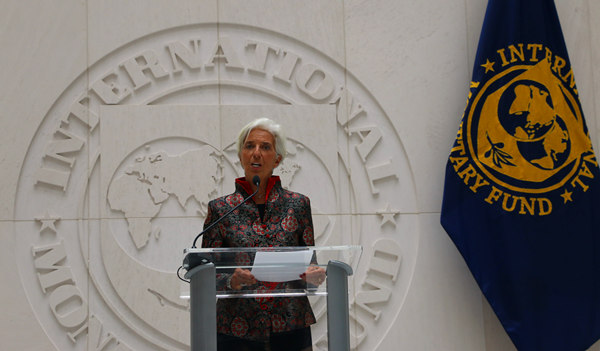RMB joins ‘elite club’ of global reserve currencies

International Monetary Fund Managing Director Christine Lagarde announces on Sept. 30 that the Chinese currency, the RMB, is included in the IMF Special Drawing Right (SDR) basket as of Oct. 1.
On Oct. 1, the RMB, China’s currency, officially entered the Special Drawing Right (SDR) currency basket, joining the US dollar, the euro, the Japanese yen and the British pound in the “elite club” of global reserve currencies.
“The RMB’s inclusion in the SDR basket is just one step of the Long March,” said Bu Yongxiang, deputy director of the Institute of Financial Studies under the People’s Bank of China.
These new developments may urge China to deepen reform and opening up. Whether the international monetary system will lead to a tripartite confrontation among the US dollar, the euro and the RMB in the future depends on whether China will be able to maintain long-term and stable economic development, he said.
After the RMB becomes an international reserve currency, China’s monetary and exchange rate policies will have international “spillover effects.” Therefore, when making policies, China will have to consider the global impact of its policies, Bu said.
It means that currency and exchange rate policy must be more market based, flexible and transparent, he said, adding that it also requires more efficient communication between policymakers and market actors.
The requirement that the RMB must be “freely usable” will further promote the opening up of China’s capital account and capital market, Bu said. On one hand, the domestic capital market will gradually open to foreign investors. On the other hand, it also requires the nation to grant domestic institutions and individuals access to foreign capital markets, he added.
Previously, China had tried to promote the internationalization of RMB by depending more on cross-border trade settlement. Now that the RMB has been included in the SDR basket, more RMB will be purchased by foreign investors for the purposes of asset allocation, said Zhong Hong, senior research fellow of the Financial Research Institute under the Bank of China. Therefore, China needs the support of a deep and extensive financial market, especially the development of a bond market, she added.
Judging from studies on the industrialization of the US dollar, the Japanese yen and the German Deutsche Mark, Zhong said the internationalization of certain currencies and the development of domestic bond markets is in a mutually beneficial relationship.
Although China’s bond market is worth about 60 trillion yuan, overseas investors account for only 2 percent of the investment. The proportion in the developed countries is normally 20 percent, Zhong said.
In the next few years, the issuance of bonds in the RMB bond market and the panda bonds will soar, Zhong said. For the next step, China’s bond market should improve the institutional framework and introduce more issuers and investors. Hopefully, the structure of the bond products will be enriched and improved, and market liquidity will also be increased, she added.
Tu Yonghong, deputy director of the International Monetary Institute at Renmin University of China, said the current international financial market is in turbulence, and the RMB is under pressure. Guarding against financial risk is the foundation for the gradual internalization of the RMB and for the stable and healthy development of China’s economy, she said.
